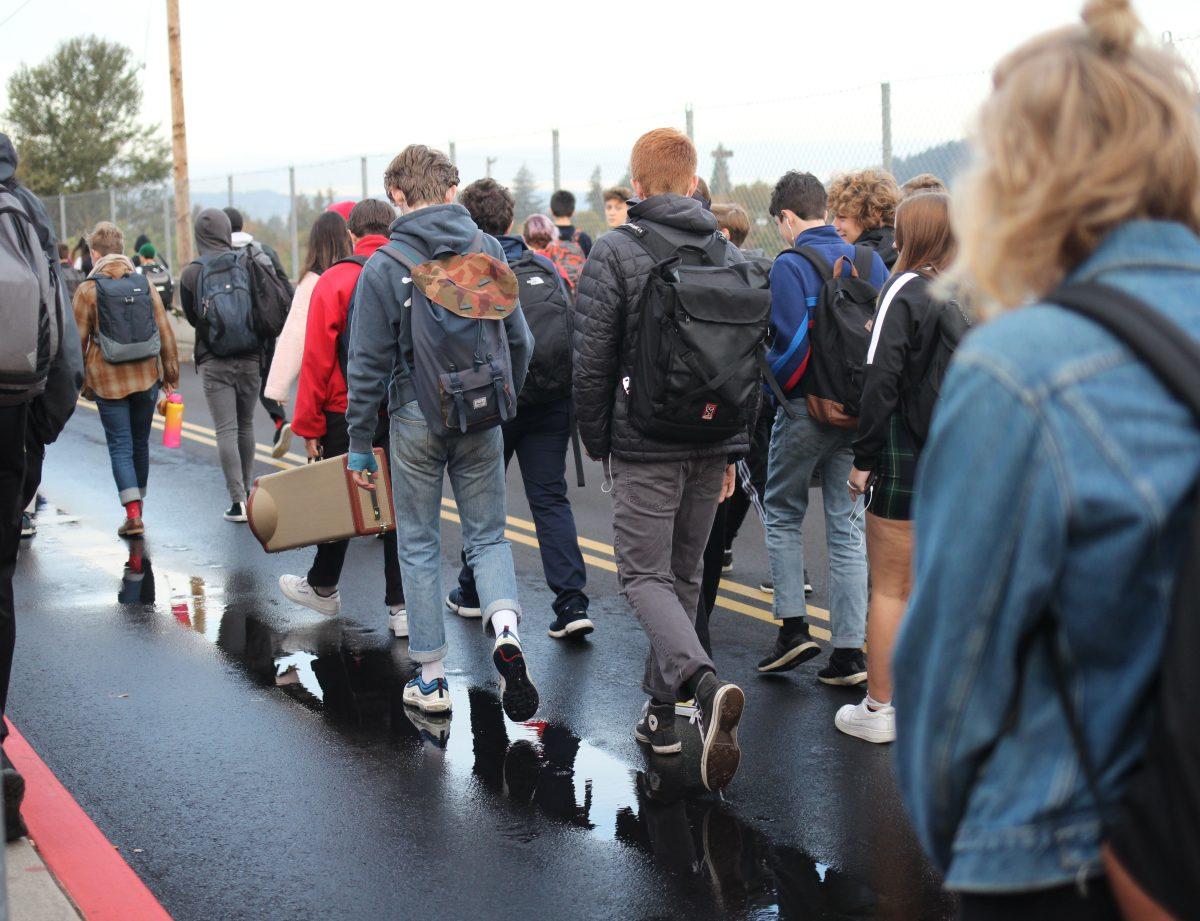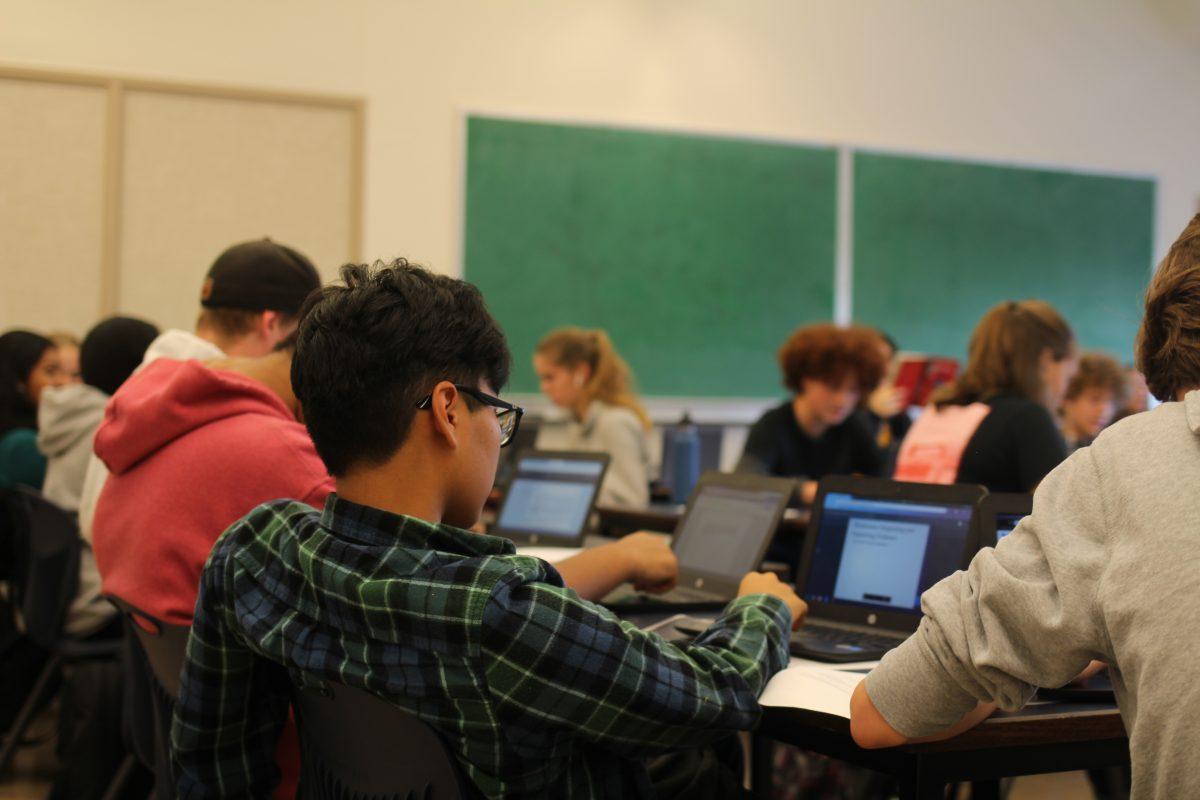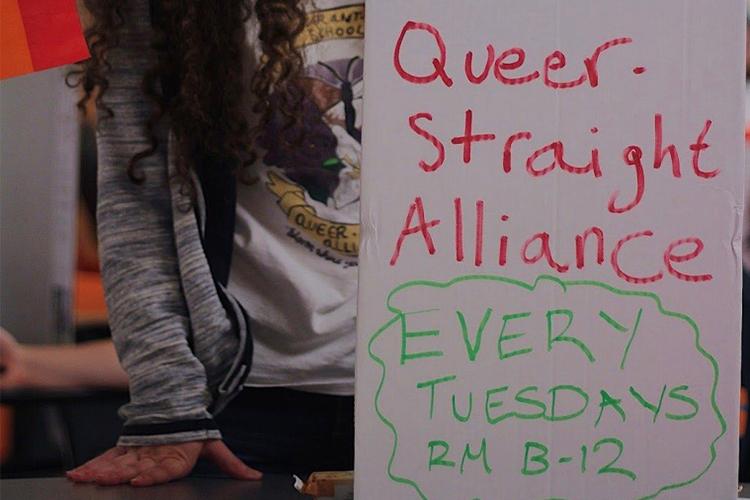
On the first day of the 2018-19 school year, students flooded into center hall, collected their schedules and made their way toward their new classrooms. This year, however, something was different. Many of the students poured into the counseling office, each vying for a chance to speak with their counselor.
Over the coming week, the crowd would remain, now moved to the hallway outside the counseling offices. Members of Grant’s administration team waited for students in an attempt to change class schedules. Due to an unforeseen increase in the number of students attending Grant, many students were forced into classes they did not request, and, when attempting to transfer, were met with an overloaded Grant administration and full classes.
Rama Thioub was one of those students. Thioub, a junior, was forced to contact the counseling office after finding out that her schedule did not include a class that she was required to take in order to attend an extracurricular program. “I had to skip like seven classes just to get an appointment with my counselor and then half of the people in the counseling office wouldn’t let students in to talk to their counselors. They would just kick people out … I just don’t understand why no one knew what to do or what was going on,” she says.
Thioub was forced into classes that she did not want to take, including study hall. She says that many of these classes were full to the brim, some classes growing to above 40 students. “There’s a lot less one-on-one time,” says Thioub. “Teachers I feel like are pushing it more toward group work now so that they can come to a group at a different time, but even with that, half the teachers can barely make it to every group in the class.”
With the beginning of the 2018-19 school year came an influx of new students to Grant High School. The numbers shattered district estimates, exacerbated a staffing shortage and left the school bursting at the seams. Though all grade levels contributed to the increase in students, the freshman class was by far the largest, leaving the school with about nine percent more students than originally expected.
These numbers left both teachers and administrators struggling under the burden of finding a full eight periods for every single new arrival. The unusual bump in numbers forced Grant Principal Dr. Carol Campbell to seek out emergency teachers and funding, much of which is still in limbo as Portland Public Schools (PPS) grapples with both a tight budget across the board and an increased student population throughout the entire district.
Teachers, already stretched thin by large class sizes in previous years, have been forced to take on even more students. The increase has been so large that the Grant administration has had to consider drastic action such as shuffling classrooms, removing mentors and even transferring entire classes to new teachers weeks into the school year.
At a student level, classrooms are noticeably overcrowded and high schoolers have been faced with a lack of options when attempting to forecast or transfer from classes. As the student to teacher ratio goes up, one-on-one time has plummeted, leaving some teachers questioning their ability to interact with students on a personal and individualized level.
Enrollment predictions are made in the spring, following a complicated yet precise formula that encompasses the amount of forecasting sheets Grant receives, with the actual calculations being completed by Portland State University, under contract with PPS. Complicating the estimates is the fact that many Grant students decide to attend private school, or live in dual assignment areas where they are allowed to choose between multiple schools.
“Sometimes students will go ahead and forecast for both schools, and then … at the last minute decide which one they’re going to,” says Campbell. “There’s some unknown things that you really can’t predict, that you don’t know what’s going to happen … there’s no way to know until the first day of school, for sure, who’s gonna show up.”

Because Grant’s enrollment has been fairly stable in the past, the predictions have proven to be moderately accurate, with a possible fluctuation of 20 to 40 students. Though the factors contributing to this year’s increased enrollment are largely unknown, many people, including PPS officials, suggest Grant’s new remodel may have added to the dilemma by becoming more appealing in the eyes of previous private school students and incoming freshman excited to attend class in a modern, renovated building.
Campbell says, “I think that what we’ve seen with the high school remodels is that these schools are really state of the art and great learning places and I think people are seeing that, you know, these are really desirable places to go to school.”
Coming into the 2018-19 school year, student counts across all grade levels have increased.
“We’ve had also an influx of all grade levels,” says Campbell, “We’ve got more sophomores than we had freshmen last year, we’ve got more juniors than we had sophomores last year.” However, the freshman class is without question the largest; typically sitting at around 400 students, it has expanded to over 450 pupils. Campbell adds, “We’ve had to overload some classes, make them bigger than what we would prefer.”
This is a pattern. The opening of Franklin’s newly-remodeled building revealed 160 more students on the first day of school than originally projected. Other Portland area high schools, both those recently modernized and in line for modernization, including Roosevelt and Madison, have seen significant growth. In fact, both high schools began their school year 100 students over their original predictions.
“What I’ve seen happen at Franklin, and what I’ve seen happen at Roosevelt is the community starts coming back to the school,” says Joe LaFontaine, the Area Assistant Superintendent of High Schools. “When they see a brand new school, all the students that went out of district, the students that have been in private schools, go ‘wow, I want to go to school there’ … So that’s a good thing, but it’s a thing that you can’t project.”
Campbell notes the uptick in Franklin students as well. “The last year that they were here (at Marshall), before they moved to their new building, the enrollment was up. And then when they moved into their new building, the enrollment was up again.”
Paige Battle, the librarian at Grant and a parent at Franklin, says, “I know just on my street alone that you have households where an older sibling went to a private school, but now the younger sibling has decided, ‘no I want to go to my neighborhood high school’.” She adds that she believes this is because the school has been renovated and there are opportunities that many students want to take advantage of.
The abrupt arrival of an estimated 140 more students at Grant than forecasted for has brought scheduling conflicts and brimming classrooms, as each student requires eight different classes. This has resulted in the need for more Full Time Employees (FTE), a reservoir of teachers that are allocated to schools from the district depending on the hierarchy of demand. Grant administration requested five FTE, yet PPS was only able to designate two due to increased numbers in other high schools as well.
During the summer, Roosevelt and Grant both received one additional FTE after persistent requests by Roosevelt Principal Filip Hristic and Campbell. However, once the school year began, the flood of students and overloaded classes demonstrated a need for more teachers.
Distributing FTE is a multistep process, beginning with the Chief of Schools, Dr. Kregg Cuellar, deciding how many staff are available for allocation. LaFontaine then designates FTE accordingly. With Roosevelt’s enrollment being 180 students over the projected amount, Grant was not the first priority. Before decisions were made, Campbell met with LaFontaine and together they analyzed the master schedule and class sizes. After much evaluating, Roosevelt and Grant were both able to receive funding for an additional two FTE after the school year began.
Freshman English teacher Dylan Leeman is uncertain about the addition of only two FTE. “You know, my admin fought hard for more FTE this fall,” he says. “They got two more which is nice but it feels a little bit like too little too late. You know, we needed five, we asked for three, we got two. You know it’s a little bit like when your toddler offers to help put the dishes away.”
“There has to be some reshuffling of staff and that’s really hard on our teachers because they feel like they’ve already invested a lot of time and energy in building a classroom climate and it’s also hard on the kids,” says Hristic. “On the one hand, I’m really grateful to have gotten the additional FTE and on the other hand, I have to be honest and say we have to figure out as a school system how to do this earlier so that we’re not creating the same disruption.”
Though the communities at these overcrowded high schools have vocalized the inconveniences of the timing, PPS officials claim that the diligence of the process prevents hurried action.
“It’s not something we do capriciously in any way, it’s something we take very seriously,” says LaFontaine. “We try to make sure that classes are as right size as we can get them, because we know we only will have what we have for FTE and once they’re assigned, there’s really no pulling it back, so we’re really careful about that process.”
Adding to the chaos is a union contract stating that for every additional five students exceeding a threshold of 160 students, teachers will receive a three percent pay increase of PPS’ base salary. With most teachers well over 160 students (for a typical teacher with six periods this would require slightly less than 27 students per class), the district is quickly spending money on a slight pay increase that could instead be put toward increased staff numbers. While PPS does spend less money paying teachers for exceeding thresholds then they would on hiring new teachers, this causes large class sizes.

Suzanne Cohen, president of the Portland Association of Teachers (PAT), describes how the contract was negotiated, “Over and over in contract negotiation we were told that nobody would be worse off with this class size language and that many people would be better off.” However, she added later on that the union is trying to grapple with the contract language and wonders whether PPS negotiated in good faith. “It’s definitely a place of tension for us… the whole point of the threshold pay is to be a disincentive,” she says, questioning whether PPS had always planned on paying teachers extra instead of hiring additional faculty.
Cohen adds that even the current threshold is a high number. “Going over the 160, that’s a really high number, if you look at a school district like Evergreen in Washington, you know, their numbers are much lower… These numbers were never ideal numbers.” However, she says that it has been hard for the union to respond to the high class sizes as PPS hasn’t presented the numbers. “We’ve not yet seen the breakdown by teacher or by class. So that’s something we’re waiting for… They know them… I don’t know why they’re not sharing them.” Instead, PAT has had to resort to sending out surveys to teachers. Cohen says that almost 45 percent of replies have said class sizes are worse than last year.
“That additional money isn’t worth it at all,” says Leeman. “We negotiated that in order to create a financial disincentive for them to overload us… we didn’t come to them saying we wanted to make more money for having more students, we wanted to say, ‘don’t you agree with us that not overloading teachers and having reasonable numbers of students is going to be good for students, and is going to create the school that students deserve?’”
Leeman is one of the many teachers who have exceeded their 160-student threshold – he is responsible for 170 students. When partnered with the chaos of moving classrooms daily, more time is dedicated to the process of physically getting to class than organizing lesson plans.
“I’m worried looking forward,” says Leeman. “I’m worried that some of my freshmen will get less individualized feedback from me on their writing and less individualized support from me on the things they need help with – on their lives and on their student behavior and skills.”
Jonathan Carr, another English teacher at Grant, has also expressed concerns with how the large classes affect the teaching environment and his students’ ability to learn, “I think what it does is things just go really fast and there’s not a lot of time to be human.”
With less individualized attention from teachers, students become more susceptible to falling behind in class, or giving up completely.
“One of the most recurrent fears about a large public high school is that students could fall through the cracks,” says Leeman. “And when we run the numbers like we’re running them now, the cracks are getting bigger.”
According to Oregonlive.com, Oregon’s annual dropout rates have fluctuated with the amount of teachers available over the past two decades, “When the number of teachers dropped to nearly 27,000 in 1998, the dropout rate hit 6.9 percent. When teacher ranks climbed to 31,000 in 2007, the dropout rate had fallen to 3.2 percent.”
This specifically impacts how teachers interact with students with specialized learning plans or students who greatly benefit from personal relationships with their teachers.
“I would say it probably has a greater impact on struggling students, students with IEPs, 504s,” says Carr. “It’s just harder to be in a room with a lot of people.”
On October 1, new full time teachers took over a few classes for teachers who began the year with an excessive workload, in an attempt to alleviate the stress. English teacher Richard Meadows had 190 students before two of his sophomore World Literature classes transferred to a new classroom to be taught by a new teacher.
“One hundred ninety students is almost like an additional class,” says Meadows. “So because of that, obviously it’s a lot for everybody. It’s a lot for teachers, the paper load, and then it’s a lot for students, so … Mr. Hill was hired to help alleviate some of the high numbers we have.”
Before the transition, students in Meadows’ class were concerned for the future of their sophomore year, the news of their move presented with only five minutes before the end of their last class with meadows.
“I think we had become accustomed to Mr. Meadows’ teaching style and also just him as a teacher, and also his grading style … and it just changed,” says sophomore Finn Dills.
Leeman agrees that adding a new teacher during the school year isn’t ideal. “One of the problems with adding FTE late in the year is that the traditional approach is that you break a class apart and you pull people away from the relationships they’re formed with their classmates and their teachers. And that’s really disruptive,” he says.
While he still has hope for a more feasible school size in the future, Leeman is wary of the burden that has been placed on teacher’s shoulders and the effect it is having on students. “I think we’re talking about the fact that Grant High School seems inappropriately staffed for the students that we have, and I think we’re talking about teacher load,” he says. “I think that there’s a greater risk that, that this becomes a place where kids can get lost and not helped.”
































